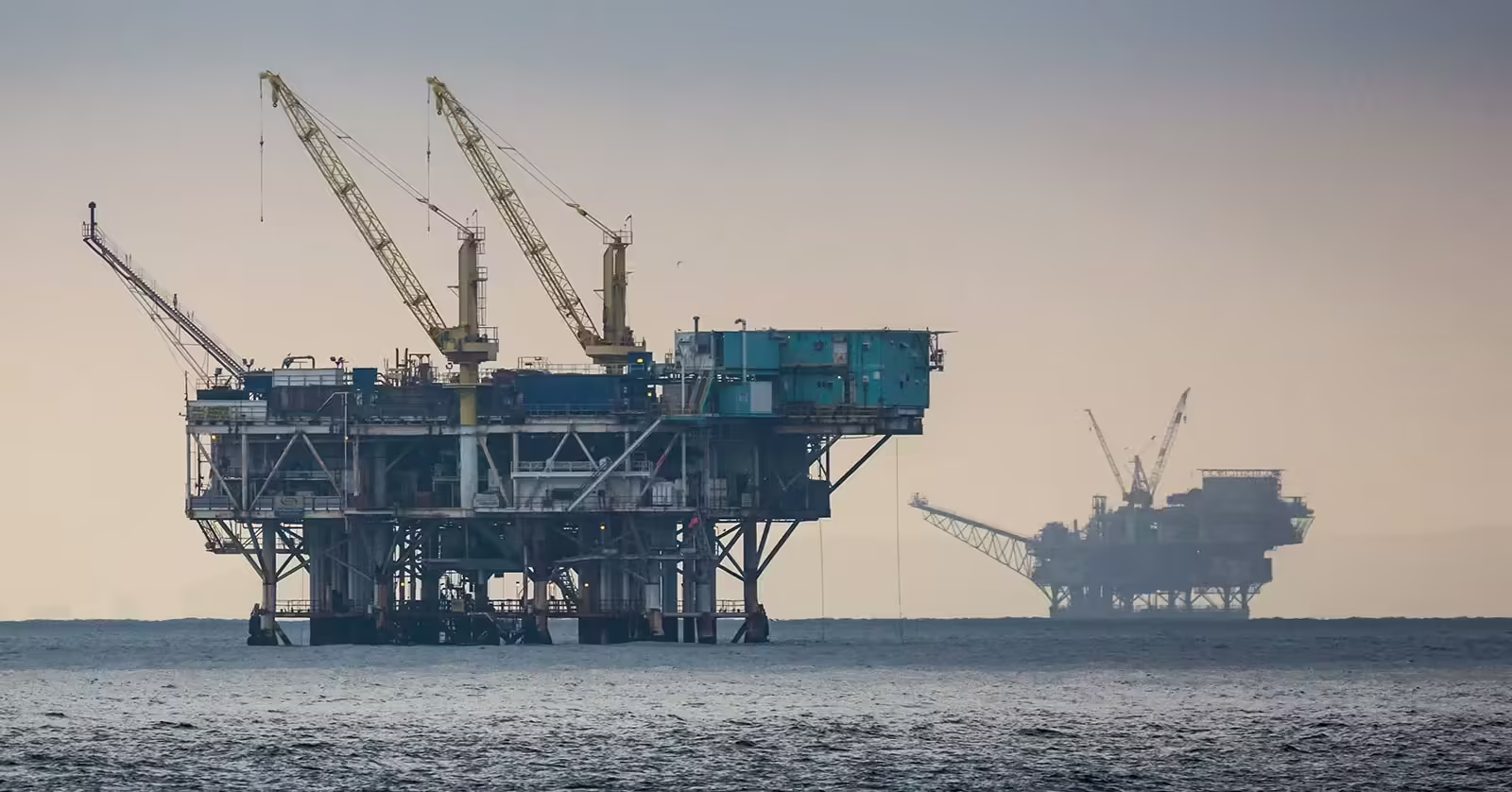11 Historical Offshore Incidents and Why They Happened
December 2, 2022

Working offshore can be dangerous, and sometimes things go wrong. In this blog post, we’ll examine 11 historical offshore incidents and their causes. From explosions to collisions, these accidents have claimed the lives of hundreds of offshore workers over the years. So, if you’re heading out to sea, read up on these disasters to know what to watch for. This list is in no particular order.
The Alexander L. Kielland Disaster – 123 Fatalities
On March 27, 1980, 212 offshore workers were aboard the floating oil rig named Alexander L. Kielland. At the time, the platform was owned by the Stavanger Drilling Company but was used by Phillips Petroleum. Out of the 212 offshore workers aboard, 123 were killed.
During the evening of March 27th, the wind outside the rig increased to about 45 miles per hour, and 40-foot waves were experienced. At the time, this floating rig was being held down by six anchor cables. The workers aboard the rig heard a loud sound, which they later realized was five of the six anchor cables breaking, leaving the floating rig anchored by only the sixth cable. Unfortunately, most workers did not attempt to evacuate due to the poor command structure aboard this floating rig. Approximately 20 minutes later, the last remaining anchor cable broke, and the platform capsized. During the storm, the platform had seven 50-person lifeboats and twenty 20-person rafts. Due to the platform capsizing, only one lifeboat and two rafts could be released from the lowering cables.
After the investigation of this catastrophe concluded, it was determined that the incident occurred due to a fatigue crack caused by a 6 mm-wide bad welding job. The catastrophe led to the implementation of new requirements for lifeboat hooks and new command structures to facilitate faster evacuation of a sinking vessel.
The Ocean Ranger Disaster – 84 Fatalities
February 14-15, 1982 – The Ocean Ranger was a mobile offshore drilling rig that sank to the bottom of the ocean off the coast of Canada. During this disaster, the Ocean Ranger was drilling an exploratory well for Mobil Oil of Canada. During the evening of February 14th, Ocean Ranger was struck by a rogue wave. Over radio frequencies, platform workers were saying that a porthole window on the rig was broken and leaked an immense amount of water into the ballast control room. At that time, the platform was getting hit by 65-foot waves. Unfortunately, the rig’s porthole window was only 28 feet. Around midnight, the rig reported they were listing 10-15 degrees.
On February 15th, around 1 AM, the platform was leaning 10 degrees to the left, bringing the situation to the attention of local authorities and Mobil helicopters. Additionally, all nearby vessels were asked to assist the platform. Soon thereafter, the Ocean Ranger transmitted a final message that they were abandoning the vessel.
The Deepwater Horizon Disaster – 11 Fatalities
The Deepwater Horizon is among the worst and most publicized offshore disasters since the 1980s. At the time, Transocean owned the rig, which was performing drilling operations for BP. As we all know, the oil rig exploded and caught fire on April 20, 2010, off the coast of Louisiana. However, before the rig exploded, numerous red flags indicated that it could (and would) happen in the near future.
In 2009, engineers for BP were concerned that the materials BP wanted to use for drilling would not withstand the pressure. The mentality of the rig workers at that time was that they would be fired for raising safety concerns to the higher-ups, even though many of them had grave concerns that the equipment was unreliable and required in-depth maintenance. In March 2010, an accident that damaged the blowout preventer went unreported. It was later determined that the blowout preventer had not been inspected for 5 years before the explosion.
On the night of April 20th, hours before the well exploded, engineers for BP saw numerous indications and warning signs that the well was going to explode. Around 9:56 PM that night, a methane gas bubble made its way up the drill column, expanding larger and larger as it traveled upwards. The rig fire burned for over 24 hours before the Deepwater Horizon sank to the bottom of the Gulf of Mexico. Out of the 126 people aboard, 11 were killed, and 17 were transported to trauma centers across various parts of Louisiana.
The Piper Alpha – 167 Fatalities
From the time it came online in 1976 until it exploded on July 6, 1988, the Piper Alpha produced more than 300,000 barrels of crude per day, accounting for approximately 10% of the United Kingdom’s total crude production. On July 6, 1988, while performing maintenance on a pump, a safety valve was removed from a gas pipe and was temporarily sealed. The pump was required to remain off until the maintenance was completed. Unfortunately, the next maintenance crew re-engaged the pump due to oversight, triggering a gas leak. Thereafter, this gas leak caused a string of enormous explosions aboard the offshore platform, killing 167 men. Out of the entire crew of 226 people, 61 survived, making this disaster one of the deadliest offshore rig catastrophes in history.
Seacrest Drillship Disaster – 91 Fatalities
On 3 November 1989, the Seacrest drillship capsized while operating in Unocal’s Platong gas field in the Gulf of Thailand during the passage of Typhoon Gay. At that time, the Seacrest had 97 crewmembers. Six survived, and 91 lost their lives. The cause of the capsize was attributed to the the Seacrest’s unseaworthiness and the severe weather conditions it encountered during the typhoon. Contrary to industry custom and practice, Unocal did not have a standby vessel tending to the Seacrest at the time she capsized, so the typhoon carried away the crewmen in the water, and the loss of the ship went unnoticed until a helicopter found it floating upside down approximately four miles from its last known location on November 4th.
Glomar Java Sea Drillship – 81 Fatalities
On October 25, 1983, the Glomar Java Sea drillship, owned by Global Marine, was hit by Typhoon Lex, capsized, and sank in the South China Sea off the coast of Hainan, China. Before the drillship’s capsizing, crew members reported that it was experiencing severe gusts of wind in excess of 86 miles per hour.
Out of the 81 crew members aboard, search and rescue teams were only able to recover the bodies of 36 crew members and the remaining 45 crew members were presumed dead.
Bohai 2 Oil Rig Disaster – 72 Fatalities
In November 1979, the Bohai 2 jack-up rig capsized in the Gulf of Bohai, killing 72 of the 76 crew members aboard. While in tow through a dangerous storm, a ventilator pump broke on the platform, creating a hole and allowing the platform to flood. The extensive flooding and severe weather conditions caused the jack-up to capsize. A subsequent investigation determined that the disaster could have been avoided, but crew members had not received adequate training in evacuation procedures or the use of life-saving equipment.
Enchova Central Platform – 42 Fatalities
In August 1984, the Enchova Central Platform, operated by Petrobras, suffered a blowout and exploded in the Campos Basin near Rio de Janeiro, Brazil. 42 crew members were killed during the evacuation of the platform. Of these 42 fatalities, 36 crew members died due to the malfunction of a lowering mechanism of a lifeboat, which rendered it vertically suspended until it eventually fell into the ocean. Additionally, six crew members lost their lives when they jumped from the burning platform into the sea. In April 1988, merely four years later, the Encova Platform suffered another blowout. Fortunately, all personnel during that instance were safely evacuated.
Mumbai High North – 22 Fatalities
July 2005—High swells caused a support vessel to collide with the Mumbai High North offshore platform, owned by the Indian government. The collision ruptured multiple gas risers on the platform, allowing gas to escape. Unfortunately, this gas exploded and set the entire platform ablaze. The platform was evacuated and destroyed within two hours. 22 out of the 384 workers aboard the Mumbai High North lost their lives because of this incident.
Usumacinta Jack-up – 22 Fatalities
On October 23, 2007, 22 crew members lost their lives in the Usumacinta Jack-Up rig catastrophe. Before this disaster, Pemex had contracted the Usumacinta Jack-Up rig to be positioned alongside the Kab-101 platform to complete the drilling of the Kab-103 well in the Bay of Campeche, located in the Gulf of Mexico. While operating in those positions, an unprecedented storm developed in the area, producing winds in excess of 80 mph and 26-foot swells.
The Usumacinta’s anchor points were not fully secured when the storm came. Thus, with the storm’s excess winds and rising swells, the rig could oscillate with the currents and eventually collide with the production valve tree on the Kab-101 platform. This resulted in a dramatic oil and gas leak and necessitated the crew to close the safety valves on two of the platform’s production wells. Unfortunately, crew members could not seal these valves 100%, and they continued leaking. Shortly thereafter, oil and gas ignited, and the 73 crew members attempted to evacuate via two lifeboats. One of the two lifeboats filled with water and capsized, and a large wave overturned the other. This disaster claimed the lives of 21 crew members during the evacuation procedure, and another crew member went missing during the search and rescue mission and was pronounced dead.
C.P. Baker Drilling Barge – 22 Fatalities
In June 1964, an explosion and fire aboard the C.P. Baker drilling barge killed 22 crewmembers. While operating in the Gulf of Mexico, the C.P. Baker’s 260-foot-long hulls experienced a blowout, letting water rush through the open doors onto the main deck of the barge. Shortly thereafter, an explosion occurred and gradually engulfed the vessel in flames. 30 minutes later, the vessel sank to the bottom of the Gulf of Mexico. Rescue teams recovered eight crew members’ bodies, but 13 crew members were never recovered and were presumed dead.
Contact Top-Rated Offshore Injury Attorneys
Offshore workers are susceptible to an exponentially long list of risks associated with their work. If you or a loved one have been injured in an offshore-related accident, do not hesitate to contact an experienced offshore drilling rig accident lawyer at Morrow & Sheppard, LLP today to discuss your legal rights.
Hogan Leatherwood is an experienced trial and personal injury attorney representing individuals and their families who have suffered catastrophic injuries such as brain injuries, spinal cord injuries, burn injuries and wrongful deaths of loved ones caused by the wrongful business practices of large companies and corporations. Hogan is regarded throughout the legal industry as a zealous and relentless advocate for his clients. Learn more about Hogan.
- Home
- |
- Offshore Injury
- |
- 11 Historical Offshore Incidents and...
















































